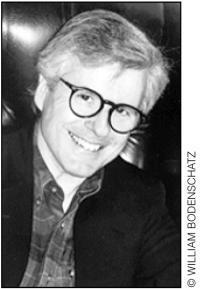Award-winning writer Thomas Mallon reveals the lifelong fascination that inspired his haunting new book on the Kennedy assassination.
You’ve been studying this all your life,” said Ruth Paine, when I sat down to interview her in the summer of 2000. She was realizing something I had only begun to understand myself: my work-in-progress was really my oldest book.
Ruth was probably the most important witness before the Warren Commission in 1964 (her testimony occupies more pages than anyone else’s), and with the exception of Mrs. Lee Harvey Oswald, she is the only surviving central figure in the story of John F. Kennedy’s assassination. As a young housewife and committed Quaker who had been studying the Russian language, Ruth Paine befriended Lee and Marina Oswald after she met them at a party in Dallas in early 1963. Within months, Marina was living with her in suburban Irving, where Oswald would come to visit on the weekends. Unbeknownst to Ruth, who helped him get his job at the Texas School Book Depository, Oswald was keeping his rifle in her garage.
I turned 12 the month President Kennedy was assassinated. I was already a history enthusiast, and I would grow up to be a novelist whose characters, ordinary people, often stumbled into historical events. In 1994, I published Henry and Clara, the fictional story of Major Henry Rathbone and Clara Harris, the engaged couple who accompanied the Lincolns to Ford’s Theatre on April 14, 1865. It was my work on this book that reawakened my interest in Ruth Paine, whose own sudden enmeshment in an assassination I’d been aware of since 1963.
Where was she now living? What had happened to her? How had she survived the betrayals and suspicions and immense media attention she had once experienced? I decided I wanted to approach these questions head-on—not in a novel, but this time in a work of nonfiction that would also explore the Kennedy murder’s enduring, mythic place in modern American history.
Almost four years passed between my initial approach to Ruth and her agreeing to the extensive conversations I had in mind. Getting ready for those long, sometimes emotional interviews involved a great deal of preparation, especially at the National Archives. Among the thousands of relevant documents there, I discovered copies of some very personal material—family letters, school essays, written reflections—that had once been inside a file box in Ruth’s garage, just feet from where Oswald kept his rifle. The Dallas police had seized these papers, without a warrant, on the afternoon of November 22, 1963.
A few months after my interviews with Ruth, I went to Texas and asked the current owners of her old ranch house if I could look around. By that time I had come to regard its garage as the strange emotional center of the story I was telling. Along with the deadly secret Oswald was keeping from Ruth—the rifle, which he came to retrieve on the night of November 21st—the garage had contained, in those private papers, the essence of Ruth’s shining personality and values. This still ordinary-looking suburban space, where both Ruth and Lee had spent time on the night before the assassination—he packing up his gun, and she, an hour or so later, painting blocks for her children—had been, all that fall, the storehouse for both good and evil.
Thirty-seven years later, I left that garage having internalized so much tension that the muscles between my neck and shoulders began to lock. The following morning, when I got up in my Dallas hotel room, I was in such pain that I could barely move. The front desk ordered me a taxi, so that I could get some relief at a local emergency room. Within minutes I found myself being treated at Parkland Hospital, where both President Kennedy and Lee Harvey Oswald had died in November 1963.
“It remains, emotionally, very fresh,” Ruth said of the assassination, in the summer of 2000. I am immensely grateful for her cooperation during the past two years, which extended to the portion of Mrs. Paine’s Garage that appeared in The New Yorker this past fall. One phone call to Ruth from the magazine’s fact-checker was scheduled for the morning of September 11, 2001—which now stands with November 22, 1963, as one of the few days all Americans remember for exactly where they were and what they were doing when they heard a piece of dreadful news.
Thomas Mallon is an award-winning novelist and essayist whose work has appeared in The American Scholar, GQ and The New Yorker.






